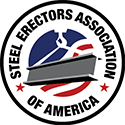|
The new guidance outlines the differences between cloth face coverings, surgical masks and respirators. It further reminds employers not to use surgical masks or cloth face coverings when respirators are needed. In addition, the guidance notes the need for social distancing measures, even when workers are wearing cloth face coverings, and recommends following the Centers for Disease Control and Prevention’s guidance on washing face coverings. Click here to read the entire article.
The world has encountered an unprecedented event in the spread of COVID-19. At print time, world markets were rattled worse than the mortgage crisis and that of 9/11, with few answers about when and if the world will go back to normal.
The new “normal” may require a new definition as it relates to education, recreation, business and even construction. Click here to read the entire article. Last week, President Trump signed into law a new bill that effectively relaxes Paycheck Protection Program loan requirements for many small businesses—the Paycheck Protection Forgiveness Act.
The law allows businesses a bit more leeway concerning where the money coming from the loans, part of the Coronavirus Aid, Relief and Economic Security (CARES) Act, are spent, as well as a few other key points. Click here to read the entire article. Industry advocates are advising against the requirement of the Occupational Safety and Health Administration (OSHA) to issue an Emergency Temporary Standard (ETS) at this time in response to the coronavirus pandemic. Such a requirement is included in the COVID -19 Every Worker Protection Act of 2020 (H.R. 6559, included as Division L, Title III in H.R. 6800).
The Construction Industry Safety Coalition (CISC) says that instead OSHA should continue with its current approach of issuing industry -specific guidance based on the latest information from the Centers for Disease Control and Prevention (CDC) as this approach provides a more nimble and effective solution than issuing a rigid, one -size -fits -all standard. Click here to read the entire article. Both reeling from economic shockwaves induced by the COVID-19 pandemic, the U.S. national economy and the Built Environment are in uncharted territory. Over the past several weeks, both engineering and construction (E&C) firms and industry service providers have been scrambling to get a handle on the situation and brace for the associated financial impacts—particularly with respect to liquidity.
By now, much of the low-hanging liquidity fruit has been picked, including extending lines of credit, securing payroll protection program (PPP) funding and reducing discretionary spending. However, the industry is far from out of the woods, and liquidity management will be a business imperative for the foreseeable future. Click here to read the entire article. Senate Majority Leader Mitch McConnell (R-KY) on Monday hoped “the Senate will soon take up and pass legislation that just passed the House” designed to loosen restrictions on how loans provided small business through the coronavirus Paycheck Protection Program can be spent, repaid and forgiven. Demand for the incredibly popular loans has eased as shifting guidance on how they are to be forgiven or repaid has shifted small business owners' attention from the loans' rewards to their risks. Click here to read the entire article.
Giant Contractors Form 'Next Coalition' to Advance Coronavirus Safety Technologies and Processes6/4/2020
While the COVID-19 pandemic has forced shutdowns of many global businesses, a coalition of leading critical infrastructure and construction companies has banded together to launch the “Next Coalition” to promote and share industry safety best practices. Black & Veatch, DPR Construction, Haskell and McCarthy Building Companies are leveraging their deep safety expertise and best practices in a campaign to ensure the well-being of crews and office team members facing complex challenges posed by the coronavirus outbreak.
The coalition seeks to identify and advance processes and technologies most likely to bolster construction safety in response to the “next normal” ushered in by COVID-19. To that end, the coalition is launching the “Construction Safety Challenge,” an open call to companies, startups and other innovators with emerging safety solutions that can be quickly deployed and scaled. Click here to read the entire article. It hasn’t been an easy ride for those applying for or administering Paycheck Protection Program loans since the program went into effect on April 15. A lightning-fast rollout, differing interpretations of the rules, a steady stream of updates, warnings to recipients about audits and penalties, and negative press about public companies that received money while small business applications were held up in lender logjams frustrated many potential borrowers to the point that some withdrew their applications or returned the money. Click here to read the entire article.
|


 RSS Feed
RSS Feed
